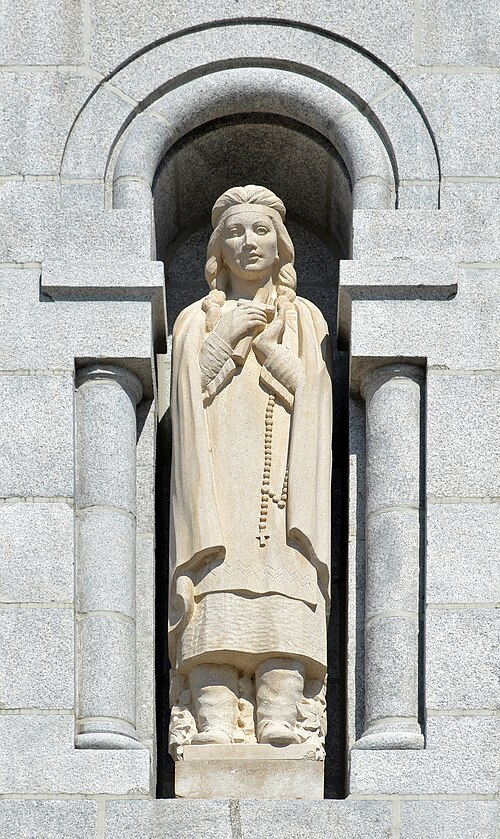
Kateri Tekakwitha, also known by the nickname "She who walks with a limp" in the Iroquois language, and referred to as the "Lily of the Mohawks," is a significant figure in the religious and cultural history of North American Indigenous peoples. Born in 1656 in Ossernenon, along the Mohawk River, which is now situated in the state of New York, Kateri Tekakwitha was a young Mohawk woman who converted to Christianity. Her path to canonization was marked by a long journey filled with miracles and devotion, ultimately leading to her recognition as a saint by the Catholic Church on October 21, 2012, during a ceremony presided over by Pope Benedict XVI in Rome.
The story of Kateri Tekakwitha was marked by her conversion to Christianity and her dedication to the Catholic faith. Her beatification, a preliminary step towards canonization, was a lengthy and challenging process. In 1884, the cause for her beatification was introduced at the Synod of American Bishops in Baltimore. However, one of the most significant milestones was her declaration as "Venerable" by Pope Pius XII on January 3, 1943. This title paved the way for official recognition of her holiness.
Kateri Tekakwitha's beatification finally took place on June 22, 1980, during the pontificate of Pope John Paul II. This beatification held particular symbolic significance as it marked the first time an Indigenous person from North America had been beatified by the Catholic Church. The path to canonization was underway, but there was still a significant hurdle to overcome.
The Miracle of Canonization
The decree that ultimately opened the path to Kateri Tekakwitha's canonization was signed on December 19, 2011. This decree referred to a miracle, an extraordinary event attributed to Kateri Tekakwitha's intercession. Specifically, it involved the miraculous healing of a young boy named Jake Fink-Bonner, residing in Sandy Point, a small town near Seattle, Washington. Jake had been afflicted with necrotizing fasciitis, a formidable condition often colloquially referred to as the "flesh-eating bacteria." His unexplained healing was attributed to Kateri Tekakwitha's intercession, an event considered a miracle by the Catholic Church.
The Canonization
The climax of this beatification and canonization process occurred on October 21, 2012, when she was canonized by Pope Benedict XVI in Rome. This ceremony marked a historic moment in the history of the Catholic Church in North America. Kateri Tekakwitha became the very first Indigenous person from North America to be canonized as a saint. Her example of faith, dedication, and resilience has inspired countless believers, both Indigenous and non-Indigenous alike.
The Symbolism of Kateri Tekakwitha
Kateri Tekakwitha is an emblematic figure of inculturation, the process through which Christian values merged with Indigenous culture. Her story also played a significant role in the expansion of Catholicism in North America as the Church sought Indigenous figures to strengthen its legitimacy. She became a versatile intertribal Catholic symbol, illustrating the capacity of the Christian faith to transcend cultural and ethnic boundaries.
The canonization of Kateri Tekakwitha, therefore, holds deep significance, both religiously and culturally. It highlighted the contribution of Indigenous peoples to the religious history of North America and celebrated the life of a young woman who, despite many obstacles, embraced her Catholic faith in an exemplary manner. Her canonization spread her devotion far beyond her original region, becoming a source of inspiration for many believers worldwide.
Selbymay, CC BY-SA 3.0, https://fr.wikipedia.org/wiki/Kateri_Tekakwitha#/media/Fichier:Sainte-Anne-de-Beaupre_-_Basilique_ext_02.jpg


0 comments: